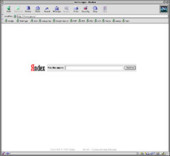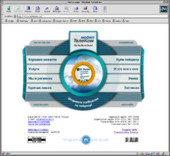|
Artemy Lebedev
§ 56. Information vs. presentationJuly 11, 2000 |
|
During its short lifetime the web several times shifted its focus, and every time it was expected to deliver more than it actually did. The primordial pattern of means and possibilities of website construction was scanty, to say the least. Basic tools for creating tables, frames etc. slowly emerged, but there is still no universal way to use a browser to do things that every user can easily do in an operating system: select a number of objects, move them, use context-dependent menus, let alone many other options. |
|
Designers who have been through the wringer with multimedia technologies, layout software, graphics editors, animation and 3D applications, have so far been exceedingly disappointed by lack of a predictable outcome and the impossibility to bring their ideas to fruition. |
|
That is how the “squeeze-in-as-much-as-you-can-into-the-browser” adventure kicked off: flash, video, 3D, sound, chat, conferences and the like finally made their way into it. But in most cases the user is unable to see or hear all this, because his connection speed is too low, or he has a basket case of a PC, or a small monitor. But above all, because the user just doesn’t want these omnifarious possibilities the authors of multi-megabyte masterpieces are peddling. |
|
A website without pics and shades is still a website. Design is first and foremost the construction and delivery of information. |
|
Most of today’s web-builders do not know that dicing screenshots is a meaningless work nobody actually needs. A real website is always a complex construction project. Creating a website that fits any screen regardless of its width is ten times as hard as making a website with a fixed width. Graphic headlines and boxes can be made even by an individual with an IQ equal to the freezing point of water. |
|
Everything said above certainly doesn’t abolish the aesthetic aspect of website creation, but a modern easy-to-use design product has to be free from eclecticism. |
|
To understand the difference between functionality and eclectics, imagine a fine, smooth, marked highway on the one side, and a labyrinth of English bushes with a mosaic path winding between them, on the other. Both are works of designers, and both are works of art. Nobody ever cares to admire a highway, and nobody usually uses a path in a labyrinth more than once in a lifetime. Therein lies the difference between an information website and a presentation website. |
|
|
Let us make a brief foray into the not-so-distant future to see that presentation design will soon die off. Everything that takes longer than 5–10 seconds to download will gradually begin to search for new ways of expression other than the web. Browsing a website where the user fails to get immediate access to whatever he needs will become a hard sell comparable to reading long-winded legalese. |
|
In order to survive, presentation websites will need to either employ information design tricks, or provide an alternative (fast) access to information. |
|
|
|

